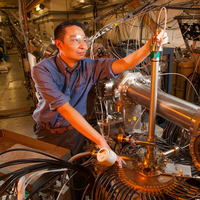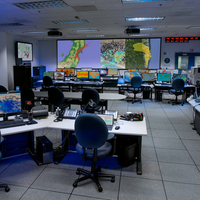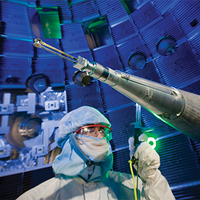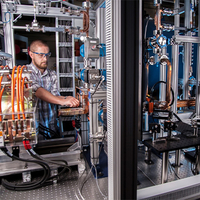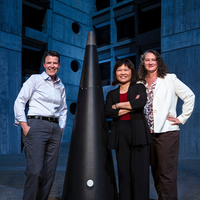OUR RESEARCH
HPC, Simulation and Data Science
What We Do
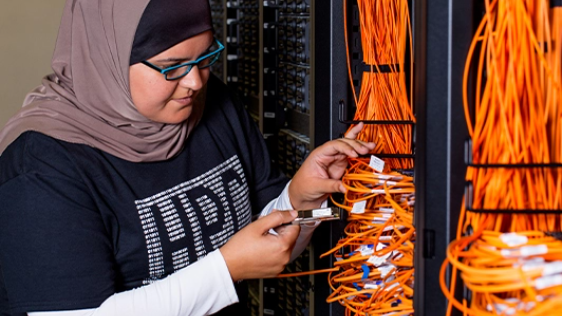
Who We Are
Computational scientists, computer scientists, data scientists, statisticians and mathematicians develop and use HPC to support nuclear deterrence, national security and basic scientific research. Meet a few of the people who work in HPC, simulation and data science:
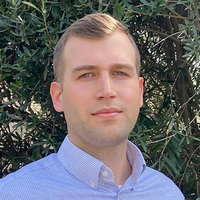
Computational mathematician Julian Andrej joined LLNL’s Center for Applied Scientific Computing (CASC) in 2019 as a postdoctoral researcher after completing his electrical engineering degree at Kiel University in Germany. “I took an unusual road to get here,” says Julian, who at the time was both using and contributing to MFEM and SUNDIALS open-source software through the GitHub hosting platform.
“I had this revelation,” he continues. “I made the connection that the software applications I was working on were both developed at the Laboratory, and I thought it would be the right place for me to work, but being a foreign national, I wasn’t sure I was well-suited for the position.” In the end, he took a chance — one that has set him on a career path where he can apply his expertise to real-world scientific problems.
Although Julian’s degree is in electrical engineering, his emphasis was on the programming and mathematics sides of the discipline. At the Laboratory, he splits his time between work on MFEM and a related project to develop codes for next-generation, high performance computing hardware.
For Julian, the work he conducts at the Laboratory is fulfilling. “I know that every part of my work is contributing to a mission, and I can see a clear traceable path of its impact,” he says. “I get to solve new problems that nobody else has solved, and that’s why I’m here. It’s challenging work, but seeing its real-world application makes all the effort worth it.”
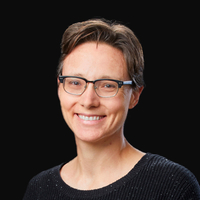
Jamie Bramwell is a simulation software project leader working primarily on Smith, a next-gen finite element simulation toolkit supporting applications throughout the Engineering directorate. Her current areas of interest include integrated multi-physics production code development, sensitivity-enabled simulation, automatic differentiation, high order finite element methods, nonlinear solid mechanics and modern object-oriented high-performance computing.
After receiving her Ph.D. in computational science, engineering and mathematics from the University of Texas at Austin, Jamie joined LLNL in 2013 as a computational engineer with a specialty in advanced finite element methods.
In 2017, Jamie joined the MFEM finite element library team as an engineering application specialist. This included developing a new cardiac mechanics simulation tool and experimental mini applications for user tutorials and examples. In 2020 she started the Smith project, a modular software development kit based on MFEM to enable agile development of GPU-ready and sensitivity-enabled high-fidelity engineering-scale simulations.
In 2023, Jamie became the Director of the Center for Computational Engineering.
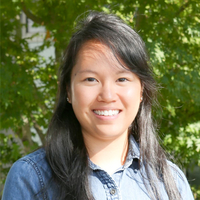
Stephanie Brink wasn't exposed to high-performance computing (HPC) during her undergraduate program. After a summer internship at Lawrence Livermore and her immersive experience at the annual Supercomputing Conference, Stephanie understood the range of HPC opportunities.
Today, Stephanie is a computer scientist in the Center for Applied Scientific Computing specializing in performance analysis and optimization, power-aware HPC and low-level power management and control. “If we can improve the amount of time it takes for us to do more science, we can make better advancements in our fields and the mission overall,” she says.
Solving complex computing problems is just one thing that keeps Stephanie motivated. “I love having the flexibility to work in different roles. If I want to be a developer, I can do that; if I want to mentor students, I can do that,” she says. Stephanie takes full advantage of those opportunities, mentoring high school girls who are considering STEM careers, serving on the Laboratory’s Asian Pacific American Council scholarship committee and participating in the Supercomputing Conference’s Student Cluster Competition committee.
Stephanie says, “There’s always something new to learn, especially when working with cutting-edge technology in HPC. Being involved in a handful of areas means that no two days are alike.”
Stephanie has a Ph.D. and M.S. in computer science from the University of Oregon and a B.S. in computer science from the University of the Pacific.
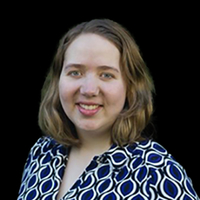
According to Amanda Muyskens, the best thing about being a statistician is the opportunity to work on — and learn from — unique challenges. She joined LLNL in 2019 after earning a Ph.D. in statistics from North Carolina State University, and today her research includes Gaussian processes (GP), computationally efficient statistical methods, uncertainty quantification and statistical consulting.
Amanda is the principal investigator for the MuyGPs project, which introduces a computationally efficient GP hyperparameter estimation method for large data. Her team used MuyGPs methods to efficiently classify images of stars and galaxies, and they developed an open-source Python code called MuyGPyS for fast implementation of the GP algorithm. Amanda credits the team dynamic for its success, noting, “We constantly teach each other and achieve things together that wouldn’t have been possible alone.”
In 2022, Amanda became co-director of LLNL’s Data Science Summer Institute and began a collaboration with Auburn University data science students. “Students bring a new perspective to the work, and I’m inspired to see them tackle problems in ways that those of us entrenched in the applications may never have considered,” she says.
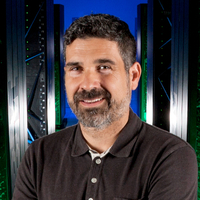
Rob Rieben was hooked after visiting the Laboratory during a summer institute while a physics undergrad at the University of California, Riverside. He joined Lawrence Livermore as a graduate research fellow in 2000 and progressed to a postdoctoral research position after earning his Ph.D. “You will never be bored or run out of new and exciting things to learn and apply when working here. This is truly a place where team-based ‘big science’ happens every day,” he says.
A computational physicist by training, Rob now leads a large multi-physics code project in the Weapons Simulation and Computing program. He recently won a Gold Award from the Strategic Deterrence Principal Directorate for sustained contributions in advancing next-generation simulation and computing.
Between applying state-of-the-art computation and numerical methods, having access to some of the world’s most powerful high-performance computing platforms and collaborating with some of the best minds in the field, Rob is excited to face the next challenges his work may bring. “What keeps me here is the never-ending set of interesting problems to solve and the constant learning and collaborative team-based scientific work required to solve them,” he says.
Rob holds a Ph.D. in engineering/applied science from the University of California, Davis and B.S. in physics from the University of California, Riverside.
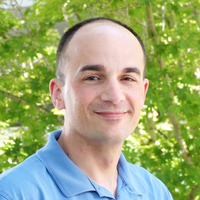
“I’m one of those summer students who never really went away,” says Josh Senecal. Josh started at Lawrence Livermore as a summer intern in 2000 and returned in 2001 as a graduate research fellow focused on image processing and data compression. He transitioned to full-time staff in 2005 after receiving his Ph.D. in computer science.
Now, Josh supports the National Ignition Facility (NIF) Optics Inspection team, developing algorithms and systems to assess the condition of several thousand large optics. “There’s always something new to work on at the Laboratory,” he explains. “You can start off doing one thing, then reinvent yourself or transition to work in another interesting area and continue to do that throughout your career here.” Josh is also a first-line supervisor, regularly participates in LLNL’s hackathons and is active in recruiting efforts, particularly at the University of California, Davis where he received his Ph.D.
Josh’s on-the-clock efforts are only part of the story. “The work-life balance here is fantastic, and I’m able to have a fulfilling life in addition to a fulfilling work career,” he explains. Not only is Josh a dedicated family man, he’s also a Volunteer Emergency Radio Group member and has coached a local swim team — and that’s before he gets around to hobbies like gardening, reading and cycling.
Our Latest News
Our Current Projects
Our multidisciplinary projects in HPC, simulation and data science vary in size, scope and duration but have one thing in common: innovation.

AI Innovation Incubator
A new Lawrence Livermore initiative seeks to advance artificial intelligence (AI) and machine learning for applied science at scale. With these tools and our data-rich environment, we’re advancing AI-driven simulations in a range of application areas: to design new molecules for pandemic response and energetic materials, integrate complex multimodal data for national security decision support, increase the power of predictive models in climate studies and inertial confinement fusion, among others.
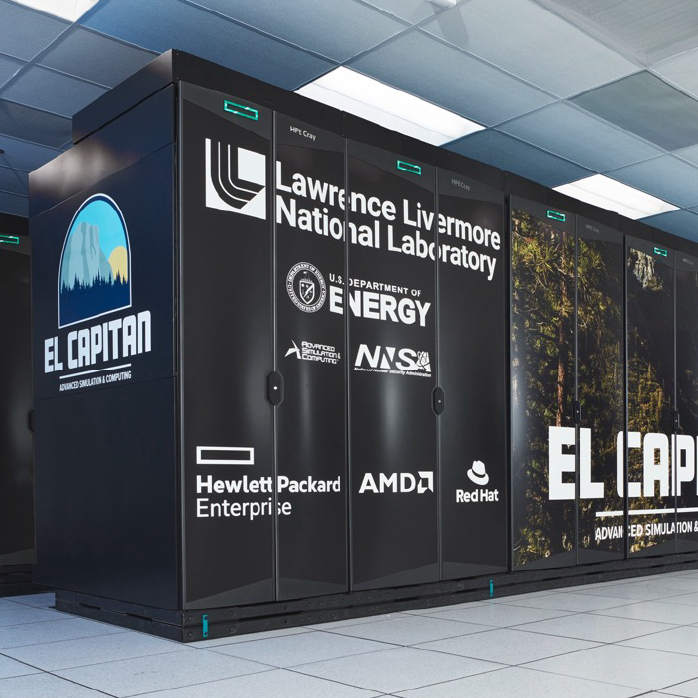
El Capitan
When deployed in 2024, El Capitan will be NNSA’s first exascale supercomputer, with the processing power of more than 2 exaflops, or 2 quintillion (1018) calculations per second. El Capitan will usher in a new era of predictive and experimental capability, producing high-fidelity 3D simulations beyond what’s possible now with the other supercomputers. With El Capitan, LLNL will apply this new realm of simulations to mission spaces including stockpile stewardship and weapon modernization and more.
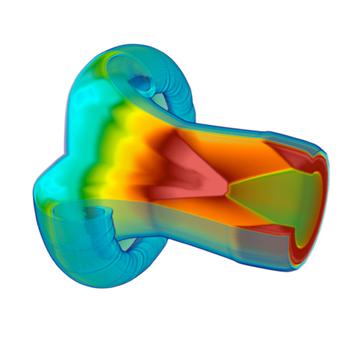
Multiphysics Simulation Codes
We develop and deploy a suite of multiphysics simulation codes that address nuclear security and inertial confinement fusion, among other missions, and support defense projects such as the design of new conventional weapons and protective equipment for soldiers. These simulation codes employ a range of physics regimes from solids to plasmas under extreme conditions and must be able to run on multiple advanced HPC architectures with efficient solvers and numerical algorithms.
Our Facilities, Centers and Institutes
The Laboratory is home to several state-of-the-art computationally focused facilities and centers to help researchers tackle the hardest and most complex national security challenges.
CASC
Center for Applied Scientific Computing
CASC enables collaboration with the broader computer, computational and data science communities in academia, industry and government.

DSI
Data Science Institute
The Data Science Institute (DSI) acts as a hub for all data science activity at the Laboratory such as areas of artificial intelligence, big-data analytics, computer vision, machine learning, predictive modeling, statistical inference, uncertainty quantification and more.

HPCIC
High Performance Computing Innovation Center
HPCIC facilitates LLNL’s external engagements in advanced computing with academic, government and industry partners who can benefit from using Livermore’s open-source software and expertise to solve their challenges.

LCC
Livermore Computing Complex
Livermore Computing Complex (LCC) is one of the world’s dominant high-performance computing (HPC) centers. LCC is key to the Laboratory’s stockpile stewardship mission, helping to ensure the safety, reliability and effectiveness of the nation’s nuclear weapons.
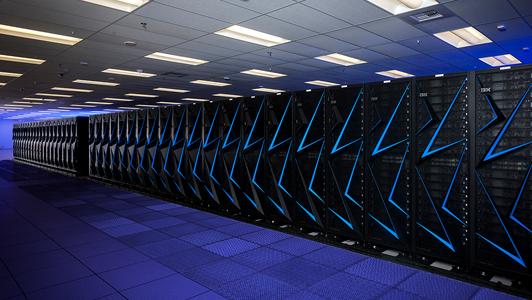
Related Organizations
World-class science takes teamwork. Explore the organizations that contribute to our HPC, simulation and data science research by clicking the images below.
Join Our Team
We offer opportunities in a variety of fields, not just science and technology. We are home to a diverse staff of professionals that includes administrators, researchers, creatives, supply chain staff, health services workers and more. Visit our careers page to learn more about the different career paths we offer and find the one that speaks to you. Make your mark on the world!


